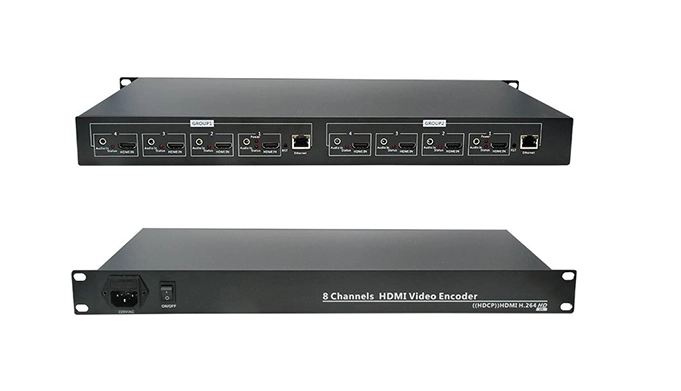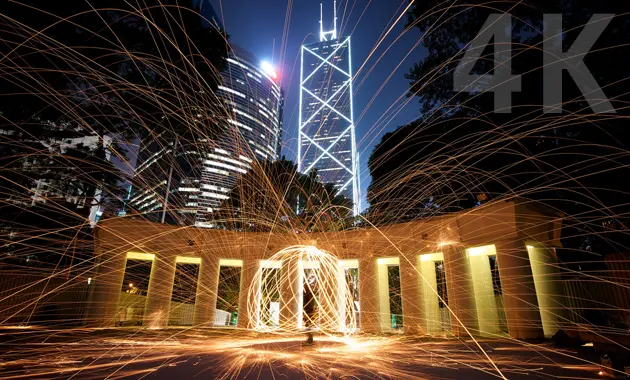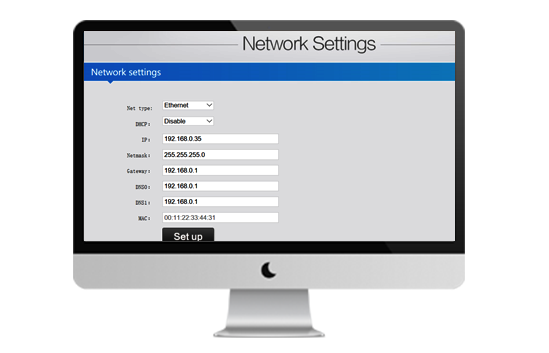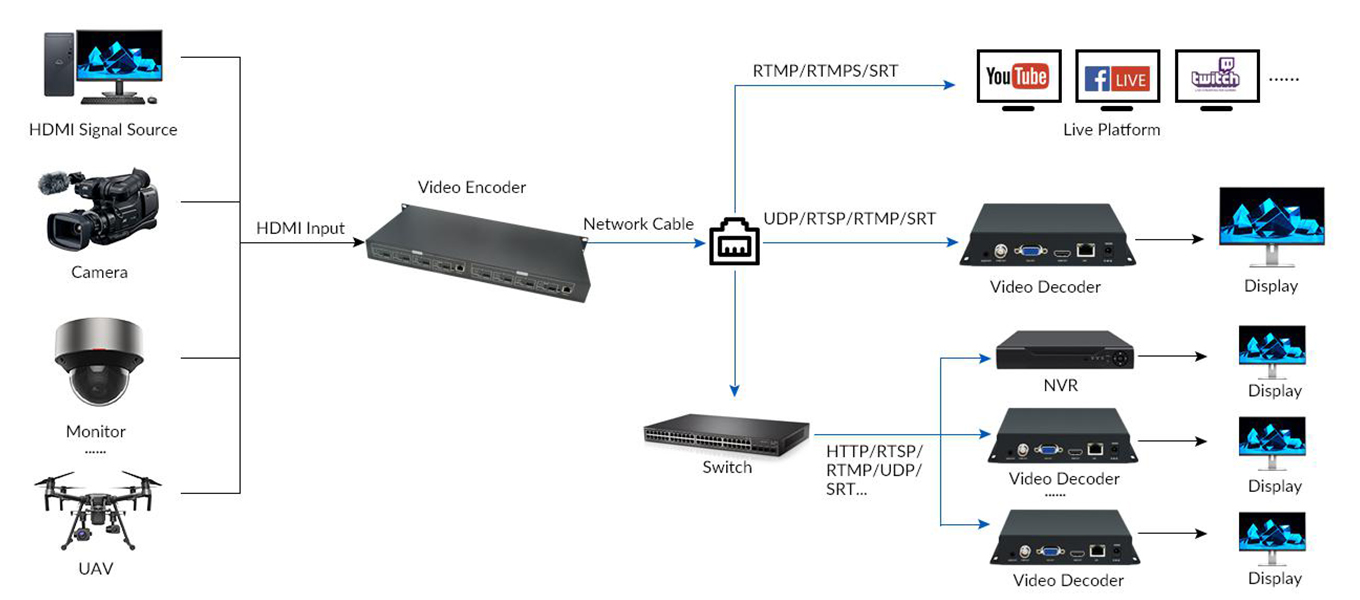Brand: ORIVISION
Model: ZY-EH408
Input Interface: HDMI*8, Audio*8
Output Interface: RJ45*2
Video Encoding: H.264
Protocol: HTTP, UTP, RTSP, RTMP, RTMPS, SRT, RTP, ONVIF protocol
Power: DC 220V (Support KC/US/EU/UK/CE Power Standard )
Warranty: 1 Year
Certificate: CE & FCC & Rohs

Standard H.264 coding algorithm
Multi protocols: HTTP, UTP, RTSP, RTMP, RTMPS, SRT, RTP, ONVIF
Up to 8 channels 4K@30Hz input/output
Low Latency, High-Quality Streaming
OEM/ODM
EH408 is an UHD 4K video encoder which is designed to meet the needs of all 4K video transmission applications. The input/output resolutions is up to 4K@30 for 8 channels. It supports H.264 high-performance encoding. Also, it supports the most protocols including SHTTP(TS/FLV)/RTMP/RTMPS/RTSP(ES/TS) / FLS/Multicast(UDP/RTP) /SRT/ Onvif, etc. Support 1U structure.

Supports real 4Kp30 HDMI input and encodes up to 4Kp30, meet your needs for a high-quality image, support up to 8CH 4K@30hz resolution input and output.

Support 8 channels HDMI input and 8 channels audio input

Support 8 channels HDMI output, each channel can be used to up to 4 platforms with the same or different protocols, altogether it can simultaneously live stream to up to 32 platforms.

Supports full range of protocols including RTSP/RTMP/RTMPS/SRT/
HLS/TS-UDP/Onvif, that means live stream with RTMP/RTMPS, while remote production with SRT.

Adopt standard H.264 coding algorithm, so they ensure high-quality image and smooth live streaming. They provide you superior video with low-latency, low bitrate and low bandwidth.

Friendly web UI, users can configure background subjects including LOGO, frame, and graphic overlay with the encoder.

Support AAC/G711 audio format

Add any self-defined text, time and image overlay at any position to announce your copyrights.

Support LAN, WAN

Support HDMI, VGA, SDI, HD-SDI, 3G-SDI, CVBS......

OEM: Free print company logo by laser print; MOQ≥1 unit
ODM: Pls send your requirements to us. (info@orivision.cn)

| Model | ZY-EH408 |
| Input Interface | HDMI*8; Audio In*8 |
| Output Interface | LAN Port*2 |
| Video Encoding | H.264 |
| Max Input Resolution | 3840*2160@30hz*8 |
| HDCP | √ |
| DHCP | √ |
| Audio Input Terminal | HDMI-IN/Stereo Line-in |
| Audio Encoding | AAC-LC/EAAC/EAACPLUS/G711 |
| Video Bit Rate | CVR/VBR: 16kbps~12Mbps |
| Audio Bit Rate | 48kbps~256kbps |
| Simultaneous Streams | Max. 2CH Streams at the same time per channel |
| Protocol Support | HTTP(TS/FLV)/RTMP/RTMPS/RTSP(ES/TS) / FLS/Multicast(UDP/RTP) /SRT/ Onvif |
| OSD Setting | Txt/Picture |
| Output Interface | RJ45*2; Ethernet(10base-t/100base-tx) |
| Output Resolution | 3840*2160,2560*1600,2560*1440,2048*1536,2048*1080,1680*1200,1600*900,1440*1050,1440*900, 1360*768,1280*720,1280*800,1280*768,1024*768,1024*576,960*540,850*480,800*600, 720*576,720*540,720*480,720*404,720*576,640*480,640*360,480*270,Auto |
| Live Streaming Platform | YouTube, Facebook, Wowoza… |
| Management | Web Opreation, remote upgrade |
| Language | English/Chinese |
| Power | 12V/DC 1A |
| POE | × |
| Size | W:440mm*D:210mm*H:45mm |
| Net Weight | 1.75kg |
Apply to TV programming, lecture capture, online courses, remote learning, course recording, broadcast meetings, Web training, remote pathology, telemedicine, conferences, concerts, sports, etc.

A: You can not send your video directly from the camera to the Internet because the raw video data is huge and can easily reach the Internet data limit.
Therefore, if we want to stream our video from SDI/HDMI camera to a public platform, we must compress the data and convert it into a common IP stream. That is the task of a video encoder.
A: We have a distribution network across the globe. At the same time, you can contact info@orivision.cn for more directions.
A: After logging in the device web panel, go to “Mainstream encoding settings”, add an RTMP/RTMPS stream, and put in the stream URL and stream key from Youtube, Facebook, Twitch.
You can go to the specific platform and find them in the stream settings to get the stream information.
A: Software encoding uses the CPU (normally your PC or mobile phone) to encode the video. In contrast, hardware encoding is mainly based on GPU (graphics processing unit) to process video data instead of CPU.
Both are OK for stream beginners, but for professional video production, we recommend using hardware encoders for their high efficiency and stability.
